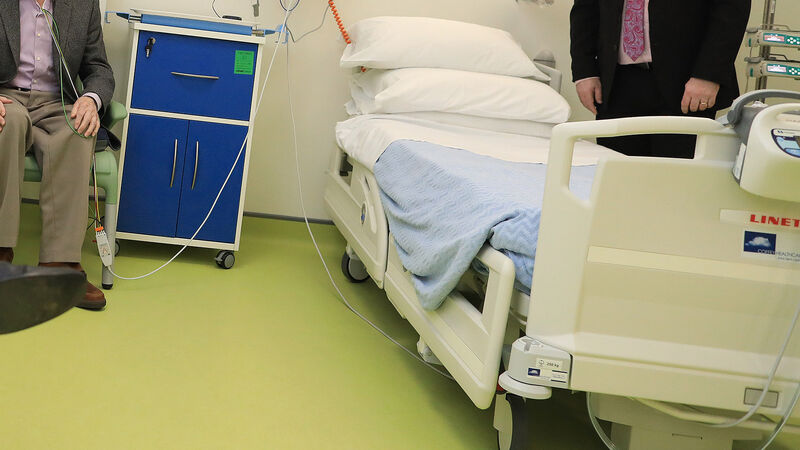Audit shows less than 70% of stroke patients admitted to specialised units

The team found bed shortages and infection control were the main barriers to admission. File picture: Julien Behal
An audit of stroke care in Ireland has found only 69% of patients were admitted to a dedicated stroke unit last year, even though this increases survival rates and the national target is 90%.
Patients in these units are more likely to live and live well at home one year after strokes, the audit states. The team found bed shortages and infection control were the main barriers to admission. Some patients were too mildly ill or needed ICU care.
They recommended “stroke units need access to single rooms in order to manage infection control and palliation for patients with a stroke”.
One patient who had a stroke last year said he will be “forever grateful” for his care in a unit. “I experienced a sudden, frightening moment during a walk when I lost function in my leg and arm,” Declan Whitney said.
“Quick intervention by a kind passerby and the prompt, expert care at hospital made a significant impact.”
He was admitted to a unit, receiving scans and medication followed by monitoring at home. Their ongoing support has seen him return to walking and playing tennis, he said.
The audit, launched on Friday by Professor Joseph Harbison, Irish National Audit of Stroke clinical lead, shows 4,999 stroke patients attended 21 hospitals last year. They found a 3% increase in stroke admissions compared to 2021, which was up 7.1% on 2020.
For hospital patients the mortality rate for 2022 was 10.8% which is lower than the UK rate of 13.8%.
They found half of all stroke patients arrived at hospital within three hours and two minutes of symptoms starting or 28 minutes faster than 2021. Prof. Harbison said this is a “notable reduction”.
“This improvement signifies a crucial step forward in stroke care,” he said. “Equally promising is the increase in the number of patients arriving within the critical three-hour window, a key predictor of positive outcomes.
"Early intervention is paramount in stroke management, and these findings underscore the strides we are making to enhance patient outcomes through timely and effective treatment."
The audit shows this is affected by where patients live, with hospitals such as Cork University Hospital serving rural areas returning longer times.
Some 57% of stroke patients are male, with an average age of 70 and 43% are female with an average age of 75.
On arrival at hospital, 47% were seen by a medical team within 10 minutes, 50% on average had a brain scan within one hour and 89% were assessed by a health and social care professional.
The audit includes atrial fibrillation, a heart condition causing an irregular and often very fast heart rate. Among stroke patients 18% knew they had this condition but an additional 10% were only diagnosed after their stroke.
They found 23% of people prescribed anticoagulants before their stroke were either on an inadequate dose, had paused medication or regularly forgot to take it.
The audit reflects concerns raised by the Irish Heart Foundation and Croi when they addressed the Oireachtas Health Committee on Wednesday.








